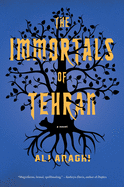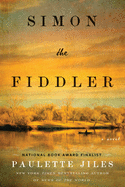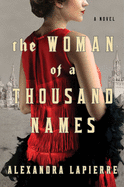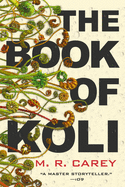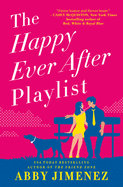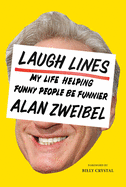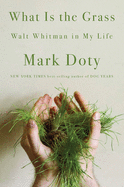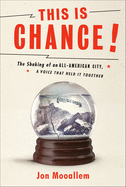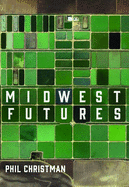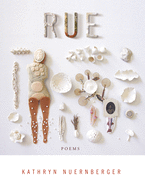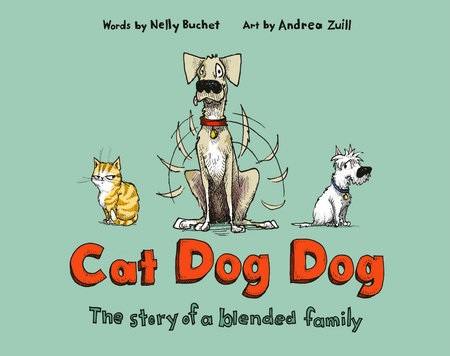.jpg) Layla F. Saad identifies as an East African, Arab, British, Black, Muslim woman who was born and grew up in the West, and currently lives in the Middle East. She holds a law degree from Lancaster University in the U.K. Me and White Supremacy: Combat Racism, Change the World, and Become a Good Ancestor (Sourcebooks, $25.99) grew out of an online letter that went viral, "I Need to Talk to Spiritual White Women about White Supremacy," followed by a 28-day Instagram challenge, #MeAndWhiteSupremacy. She recently launched GoodAncestorAcademy.com, a hub where you can find her podcasts and anti-racism master classes. We spoke with her via Zoom from her home in Doha, Qatar, where she lives with her husband and two children.
Layla F. Saad identifies as an East African, Arab, British, Black, Muslim woman who was born and grew up in the West, and currently lives in the Middle East. She holds a law degree from Lancaster University in the U.K. Me and White Supremacy: Combat Racism, Change the World, and Become a Good Ancestor (Sourcebooks, $25.99) grew out of an online letter that went viral, "I Need to Talk to Spiritual White Women about White Supremacy," followed by a 28-day Instagram challenge, #MeAndWhiteSupremacy. She recently launched GoodAncestorAcademy.com, a hub where you can find her podcasts and anti-racism master classes. We spoke with her via Zoom from her home in Doha, Qatar, where she lives with her husband and two children.
First, as a white cisgender woman, I want to thank you for your book. In it you write, "The primary force that drives my work is a passionate desire to become a good ancestor." This mission has the potential to unite whites doing antiracist work, with Blacks, Indigenous people and People of Color. How did your podcasts, your Instagram, and your book build toward this mission? Or did you begin with this mission and use these platforms to further it?
The idea of "becoming a good ancestor" was something that I'd seen online, and then I had read Octavia Butler's books Parable of the Sower and Parable of the Talents (Seven Stories Press). She wrote these booksin the 1990s, and they were based in the 2020s, predicting a dystopian time. It's so parallel to what we're going through right now that it's just really bizarre.
At the time when I came across her work, I'd published that viral letter "I Need to Talk to Spiritual White Women about White Supremacy" [August 15, 2017], and I'd been having these conversations online everyday with spiritual white women. This idea of becoming a good ancestor really came through for me with her books. It was energizing me. And then in the summer of 2018, the Instagram challenge came around, and between the summer and the winter, I wrote the workbook [that evolved into Me and White Supremacy]. I was developing this body of work that I could see would have a legacy beyond my lifetime.
Nobody who's alive today created white supremacy, but we're sitting with the legacy of it, and it's a heavy legacy. How do I come out from under that? How do I create a different future? And so "becoming a good ancestor" really was for me--and then for many other people--this way to find hope, to find direction in action.
In that viral letter, you write: "just because I'm going to do this imperfectly does not mean that I should not do it at all…. I'm not going to allow my fear to do that to me. So my words will be imperfect. But I pray that both the intention and impact of my words are of service." Your phrasing gives everyone permission to make mistakes if the intention is to be of service. Can you talk about your experience of watching people struggle with this fear?
I'd like to start off by speaking about my own struggles. I definitely have perfectionistic tendencies. Perfectionism has very powerful momentum, and it can stop us. One of my favorite writers is Audre Lorde. I think of her as one of my good ancestors. She has an essay called "The Transformation of Silence into Language and Action." It's about this idea that your silence will not protect you. She had a lump in her breast, and she was waiting to hear if it was benign or malignant. In that time waiting for the test results, she really went deep inside of herself. She said, the question I'm asking myself is, "of what had I been so afraid?", if I can face the prospect of my own mortality, then I must speak because my not speaking never protected me from any harm or any fear.
I myself, as a Black woman doing this work, several times felt like I don't know if I'm the right person to write this book; I don't know if I'm the right person to teach this work. And what kept coming back to me again and again is, yes, but your silence won't protect you from not experiencing racism. So speak!
So for people with white privilege, your silence doesn't mean that you do not then perpetuate racism. When you have white privilege, and you've not been very adept over your lifetime at having conversations about race, the idea of jumping in and really saying something and really claiming it is very, very hard because you're fighting your own perfectionism. And then you're also thinking about what other people are going to be thinking about you: What are other white people going to think about you? What are People of Color going to think about you? So you won't say anything at all. It keeps you in a state of fear around engaging with the work, and then for the People of Color in your life, it means that they're not clear where you stand; they're not clear how safe they are with you.
You're not anti-racist through silence. So speak up, be willing to stumble, be willing to fall, be willing to make mistakes. It's the only way we learn.
 In your book, you describe a conversation that your mother had with you when you were seven years old, about how you would have to work three times harder because 1) you're Black, 2) you're Muslim, and 3) you're female. Would you say that's about the right age for those of us who are white parents and educators to be having these conversations with children about white supremacy and the constructs of white supremacy?
In your book, you describe a conversation that your mother had with you when you were seven years old, about how you would have to work three times harder because 1) you're Black, 2) you're Muslim, and 3) you're female. Would you say that's about the right age for those of us who are white parents and educators to be having these conversations with children about white supremacy and the constructs of white supremacy?
I love that you bring up children because, you know, outside of teaching them about these issues, we want our children to have a strong sense of empathy. We want our children to be able to read the room, to be able to see the people around them, if somebody's hurting, somebody's happy. Because if they're tapped into their own emotions, they can connect with another person's emotions. That absolutely applies within anti-racism work, and that's why I said it is appropriate that you would feel those emotions because you understand what Black, Indigenous, and People of Color have for centuries been experiencing and if you have a sense of empathy, then you will feel those feelings.
Children learn at different ages, and we have to be mindful of what we're introducing to kids and at what ages. When parents ask me, how do I speak to my kids about white supremacy, what I always say is: Don't think of it as a one-time very serious conversation. It's not the sex conversation. [Laughter] It's an ongoing conversation that isn't just about what's wrong or the mistakes that have been made, but really helping children have an understanding of how the world actually works, what history actually has been.
Most people who are white haven't had a very nuanced and deep education when they were young about racism. You know, they hear things like "we don't see color" or "it's not nice to point out color, or people's race." Things like, "you know, we're all one race: the human race." "Racists are bad people." That's the definition of a racist, a bad person who is not very nice to people who aren't white, and that's the end of it.
So the first place to start is with yourself--really taking the responsibility for your own anti-racism education and your own personal anti-racism work, because you cannot have deep and nuanced and complex conversations with anyone else if you don't know. And when you don't know, you're afraid you're going to say the wrong thing, you're afraid you're going to scar them for life. Anti-racism is really thinking about how do we show up for our community? Our friends at school, our teachers and in our communities, at work? It's about understanding that anti-racism is a practice.
In terms of the ages, I can't remember the age at which they say that children begin to notice differences in skin color. When we say, "We don't see color," kids are like, "No we do see color." My kids crack me up when they say, "Oh, she's pink!" They do notice. It's just that they don't start off in life ascribing meaning to it. But soon meaning is given to it, because whether it's said to them directly or indirectly, society is reinforcing, Who is the norm? What is the norm of beauty? What is the correct way of speaking? What's the norm of the races of people in our community? They're noticing. Their brains are formulating what does it mean, and until parents give them a meaning that's anti-racist in practice, the meaning they will ascribe is the status quo. Which is white superiority.
In the book you write, "the aim of this work is not self-loathing. The work is truth--owning it and figuring out what to do with it. This is lifelong work." It reminded me of something that M. Scott Peck wrote in The Road Less Traveled about coming to consciousness. That once you are aware of patterns of behavior--once you've brought the unconscious to a conscious level--you can't stop the work if you want to remain conscious.
I love that you used this quote because before I started anti-racism work, I was a life coach. I try and understand this work from the perspective of human behavior and around truth and consciousness broadly, and how that applies here. Once you come into this consciousness of how the world actually operates, to decide that you want to close your eyes and not want to have to deal with it, is now worse than where you were before. Because before you were ignorant because nothing in your world had ever told you otherwise.
Now you begin to see, and you begin to understand and it's undeniable. Now to choose to say, "No, I don't want to have to deal with it" is actually worse. Now you become the so-called "bad racist" that you've been trying to not be associated with. It's really important to keep opening our eyes wider and wider.
I think many people come into this work because integrity is a huge value of theirs. So when you have this dissonance between, this is what I now know and understand, and yet my behaviors are not matching what I now know and understand, it's very painful. The difference between this work and personal development work is there is no nice neat bow at the end. There is no graduation. --Jennifer M. Brown, senior editor, Shelf Awareness
Layla F. Saad: Becoming a Good Ancestor
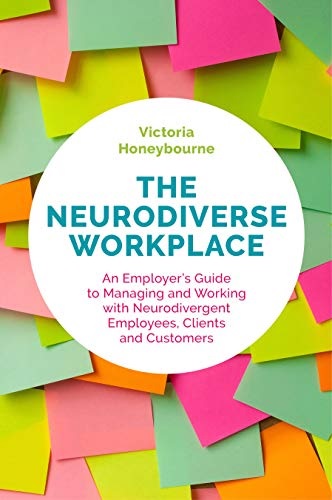 Author Victoria Honeybourne focuses not only on the social justice case for offering employment opportunities to those with different brain wiring, she also makes a compelling business case for doing so. In The Neurodiverse Workplace: An Employer’s Guide to Managing and Working with Neurodivergent Employees, Clients and Customers (Jessica Kingsley Publishers, $26.95), Honeybourne provides examples of organizations that have benefited from the different perspectives of, and innovation driven by, their neurodivergent workforce. She highlights the ways in which they contribute creative solutions to age-old business challenges. Honeybourne encourages employers to leverage the talent of neurodiverse employees by understanding their individual needs and making the necessary accommodations that will set them up for success.
Author Victoria Honeybourne focuses not only on the social justice case for offering employment opportunities to those with different brain wiring, she also makes a compelling business case for doing so. In The Neurodiverse Workplace: An Employer’s Guide to Managing and Working with Neurodivergent Employees, Clients and Customers (Jessica Kingsley Publishers, $26.95), Honeybourne provides examples of organizations that have benefited from the different perspectives of, and innovation driven by, their neurodivergent workforce. She highlights the ways in which they contribute creative solutions to age-old business challenges. Honeybourne encourages employers to leverage the talent of neurodiverse employees by understanding their individual needs and making the necessary accommodations that will set them up for success.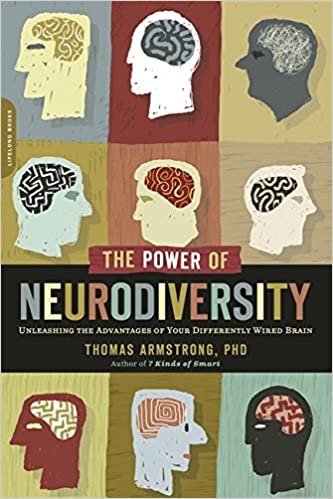 In The Power of Neurodiversity: Unleashing the Advantages of Your Differently Wired Brain (Da Capo Lifelong Books, $16.95), Thomas Armstrong recommends focusing on the specific abilities of each individual instead of regarding them simply as the sum of their disability label. He makes it clear that diversity among brains is as enriching as cultural and racial diversity, with chapters highlighting "the positive side of being autistic," "the joys of the hyperactive brain" and "the anxiety advantage."
In The Power of Neurodiversity: Unleashing the Advantages of Your Differently Wired Brain (Da Capo Lifelong Books, $16.95), Thomas Armstrong recommends focusing on the specific abilities of each individual instead of regarding them simply as the sum of their disability label. He makes it clear that diversity among brains is as enriching as cultural and racial diversity, with chapters highlighting "the positive side of being autistic," "the joys of the hyperactive brain" and "the anxiety advantage."


.jpg)
 In your book, you describe a conversation that your mother had with you when you were seven years old, about how you would have to work three times harder because 1) you're Black, 2) you're Muslim, and 3) you're female. Would you say that's about the right age for those of us who are white parents and educators to be having these conversations with children about white supremacy and the constructs of white supremacy?
In your book, you describe a conversation that your mother had with you when you were seven years old, about how you would have to work three times harder because 1) you're Black, 2) you're Muslim, and 3) you're female. Would you say that's about the right age for those of us who are white parents and educators to be having these conversations with children about white supremacy and the constructs of white supremacy?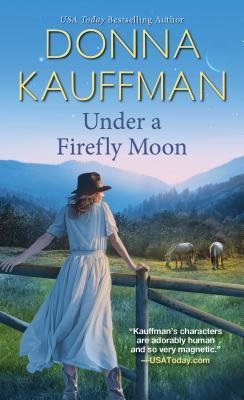 Romance writer Donna Kauffman, author of more than 70 novels, which have been translated and published in 26 countries, died April 9 at age 60. A native of Washington, D.C., Kauffman ultimately called the Blue Ridge Mountains home, where she drew inspiration for her novels--including the setting of her final work, Under a Firefly Moon, which was released January 28. Her romance novel series include Blue Hollow Falls, the Brides and Bachelors of Blueberry Cove, Cupcake Club and Glass Slipper, Inc. Alicia Condon, Kauffman's book editor, said: "Donna had a special gift for telling tender, uplifting stories while offering a uniquely insightful glimpse at the human condition. She made a world where every character was important and where love always wins the day." Under a Firefly Moon is available from Kensington's Zebra Books imprint ($7.99, 9781420149333).
Romance writer Donna Kauffman, author of more than 70 novels, which have been translated and published in 26 countries, died April 9 at age 60. A native of Washington, D.C., Kauffman ultimately called the Blue Ridge Mountains home, where she drew inspiration for her novels--including the setting of her final work, Under a Firefly Moon, which was released January 28. Her romance novel series include Blue Hollow Falls, the Brides and Bachelors of Blueberry Cove, Cupcake Club and Glass Slipper, Inc. Alicia Condon, Kauffman's book editor, said: "Donna had a special gift for telling tender, uplifting stories while offering a uniquely insightful glimpse at the human condition. She made a world where every character was important and where love always wins the day." Under a Firefly Moon is available from Kensington's Zebra Books imprint ($7.99, 9781420149333).